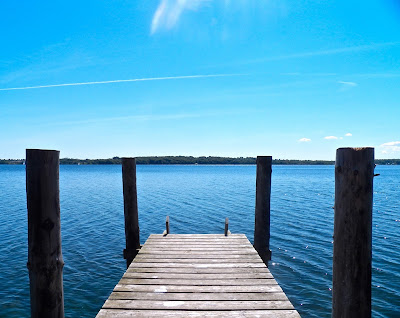PROMPT: Contrast today's experiences of a Danish National Park with America's National Parks in general, or specifically with one that you have visited.
Denmark is now home to 4 national parks. Today we visited Denmark’s 4th largest forest, Gribskov. The forest is owned and administered by the State of Denmark and is designated as a Eueopean Union habitat directive. Gribskov isn’t a national park quite yet. Upon arrival, we learned about the Nature Agency’s initiatives and efforts to establish Gribskov as national park. For over 10 years, this topic has brought great debate, conflict and opposition by private parties.
A group of about 10 private farmers have strongly opposed this integration into a national park for many years... and with success. These farmers believe that once they are a part of the national park, state regulations will be imposed and change their businesses. A government official working with the park informed us that there is no evidence in any law stating that any change will be forced upon or even required by private business owners if they join the national park. Local business owners are scared they will lose control of their property.
I'm excited to see what happens to Gribskov in the next few years.
Denmark is now home to 4 national parks. Today we visited Denmark’s 4th largest forest, Gribskov. The forest is owned and administered by the State of Denmark and is designated as a Eueopean Union habitat directive. Gribskov isn’t a national park quite yet. Upon arrival, we learned about the Nature Agency’s initiatives and efforts to establish Gribskov as national park. For over 10 years, this topic has brought great debate, conflict and opposition by private parties.
A group of about 10 private farmers have strongly opposed this integration into a national park for many years... and with success. These farmers believe that once they are a part of the national park, state regulations will be imposed and change their businesses. A government official working with the park informed us that there is no evidence in any law stating that any change will be forced upon or even required by private business owners if they join the national park. Local business owners are scared they will lose control of their property.
I'm excited to see what happens to Gribskov in the next few years.
Some of the parks that I’ve been lucky enough to visit are,
the Virgin Islands National Park, Glacier Bay, Banff National Park, and the Great Smoky
Mountains.
 |
| Gribskov park |
 |
| Cows enjoying the grass at Gribskov. |
 |
| A small dock on a beautiful lake next to Gribskov. |
Parks in the US are
operated by the National Park Service, which means that they are closely
monitored and protected from activities that may prove to be disruptive to the
park. After seeing how people oriented
Danish parks were, I realized that US national parks don’t have a cozy or
personable feel to them like the Danish parks do. The endless amount of restrictions in the US give
the parks a “look don’t touch” feel to them.
Dissimilarly, Danish national parks encourage interaction and
involvement between the land and the people. Danish national parks cater to the
people. A wide variety of recreational
activities are supported by the parks in Denmark such as fishing, having a BBQ, or motor-biking. Our tour guide explained how they invite people who use the horseback riding trails to come in and help decide how the riding paths should be laid out. The
parks in Denmark also offer programming for anyone who wants to show up, free
of charge. The park services here in Denmark are so open to working with the people and definitely encourage participation. Lastly, the forests in Denmark
serve as a resource of timber. There are strict deforestation regulations in
US national parks.
It’s
really incredible to see flourishing national parks in Denmark so close to a
major city. Gribskov is another great
example of the intimate interplay between urban life and greenspaces.
